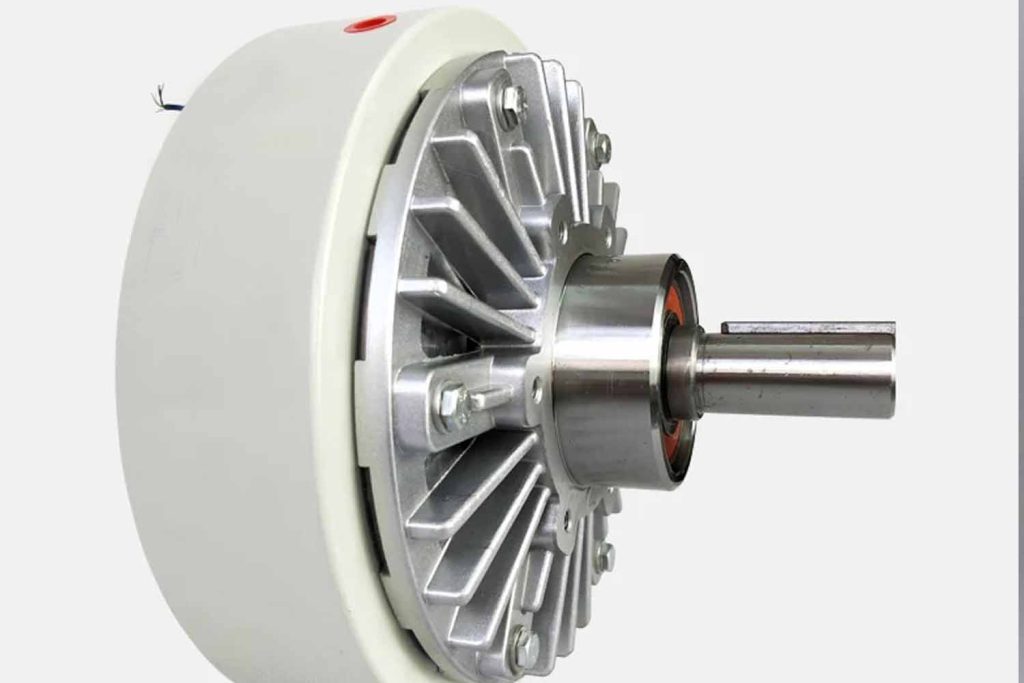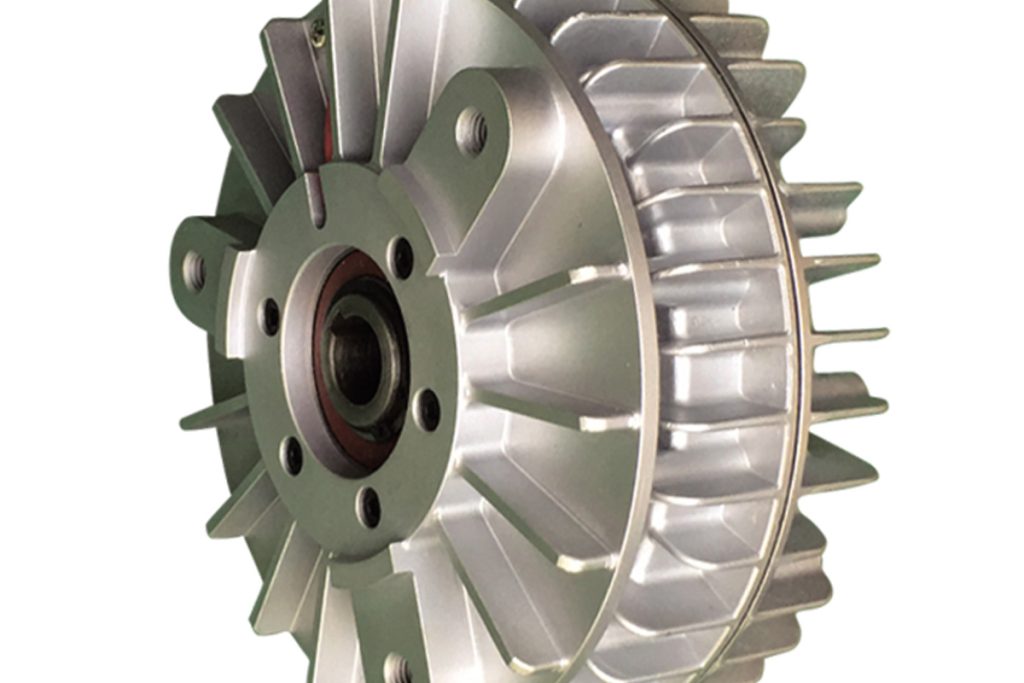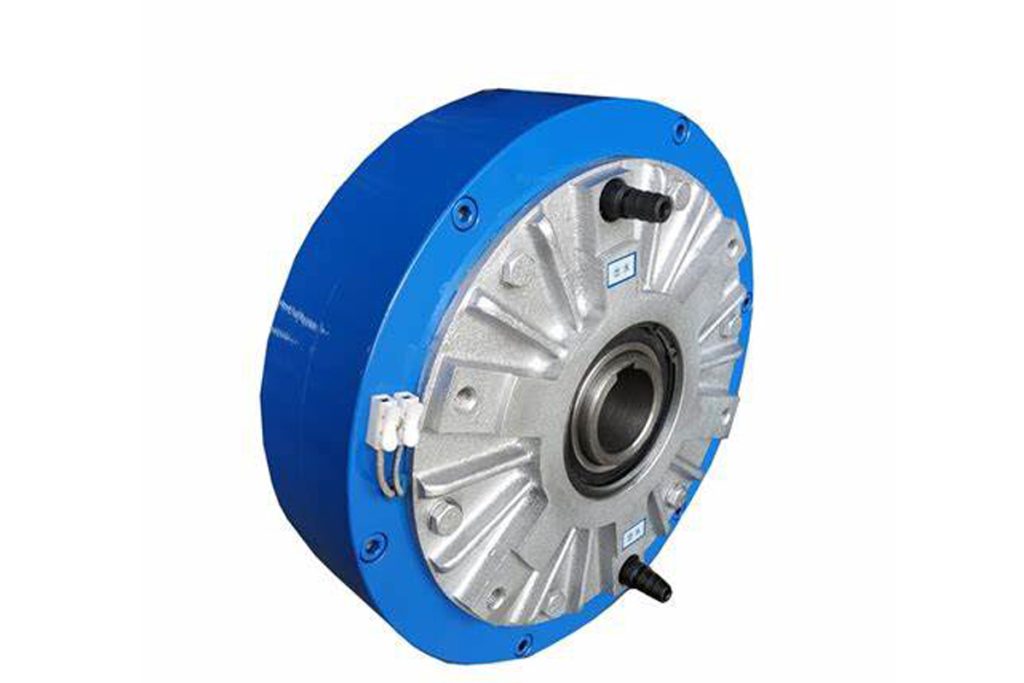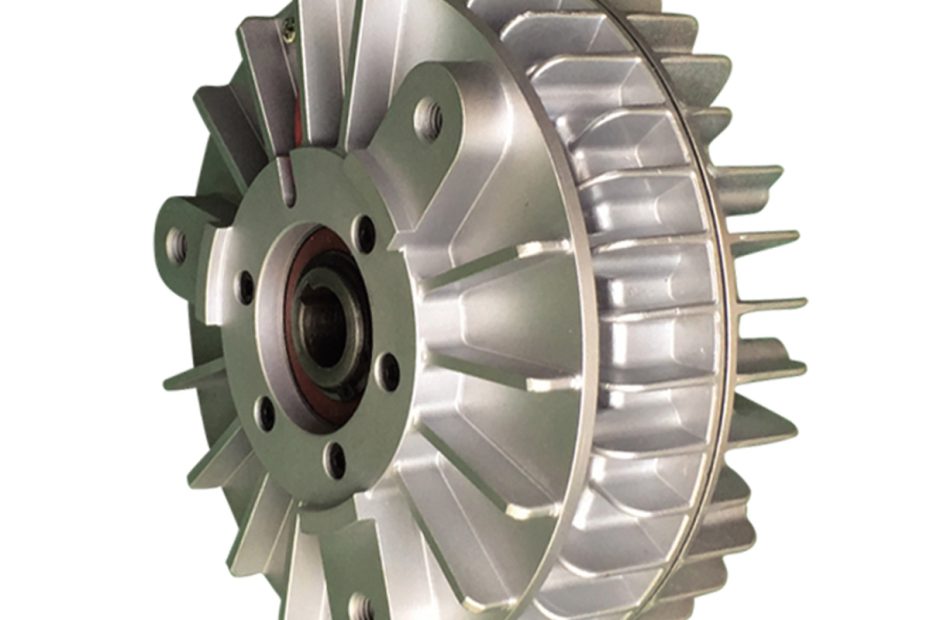A magnetic particle brake uses the binding force between magnetic particles and working surfaces to transmit power and motion. Electromagnetic attraction generates this binding force, enabling precise torque control and adjustment.
In simple terms, the brake operates on the electromagnetic principle and uses magnetic particles to transmit torque. Its fast response, simple structure, pollution-free design, and noiseless operation make it a reliable braking solution.
Industries use magnetic particle brakes mainly in mechanical transmission systems requiring braking, speed regulation, tension control, or test loading. They are especially valuable in processes demanding stable and precise torque management.



Functional Characteristics of Magnetic Particle Brakes
Lightweight, Maintenance-Free Design
Its compact design uses heat-resistant coils, special grease bearings, and wear-resistant treatments on the armature. These features extend operational life while eliminating the need for frequent maintenance.
High-Precision Torque Control
The magnetic particle brake provides a wide torque control range with excellent accuracy. The transmitted torque is directly proportional to the excitation current, ensuring highly precise control in demanding applications.
Outstanding Durability and Long Life
Manufacturers use super-alloy magnetic particles with exceptional heat resistance, wear resistance, oxidation resistance, and corrosion resistance. These qualities allow the brake to operate reliably for an extended service life.
Stable Constant Torque Performance
The magnetic particles maintain strong bonding forces, ensuring stable sliding torque. The brake delivers constant torque over long periods, regardless of variations in relative rotational speed.
Continuous Sliding Capability
The brake’s efficient heat dissipation system and uniform thermal deformation structure allow smooth sliding without vibration. Its high-temperature-resistant particles handle high braking power and continuous operation effortlessly.
Smooth Engagement Without Impact
The brake engages and disengages with minimal impact. It starts and stops smoothly while generating negligible resistance torque, which reduces unnecessary heat generation and mechanical stress.
Suitable for High-Frequency Operations
With a quick response time and specialized cooling design, the brake performs reliably in high-frequency start-stop cycles, making it ideal for precision manufacturing lines.
Conclusion
The magnetic particle particle brake is a versatile, high-performance control component. Its precise torque control, durability, and smooth operation have made it indispensable in industries such as papermaking, printing, plastics, rubber, textiles, dyeing, wire, and cable manufacturing.
From unwinding to rewinding, it ensures stable tension control, boosting both production quality and efficiency. As automation advances, the role of magnetic particle brakes in precision-driven industries will only continue to expand.
